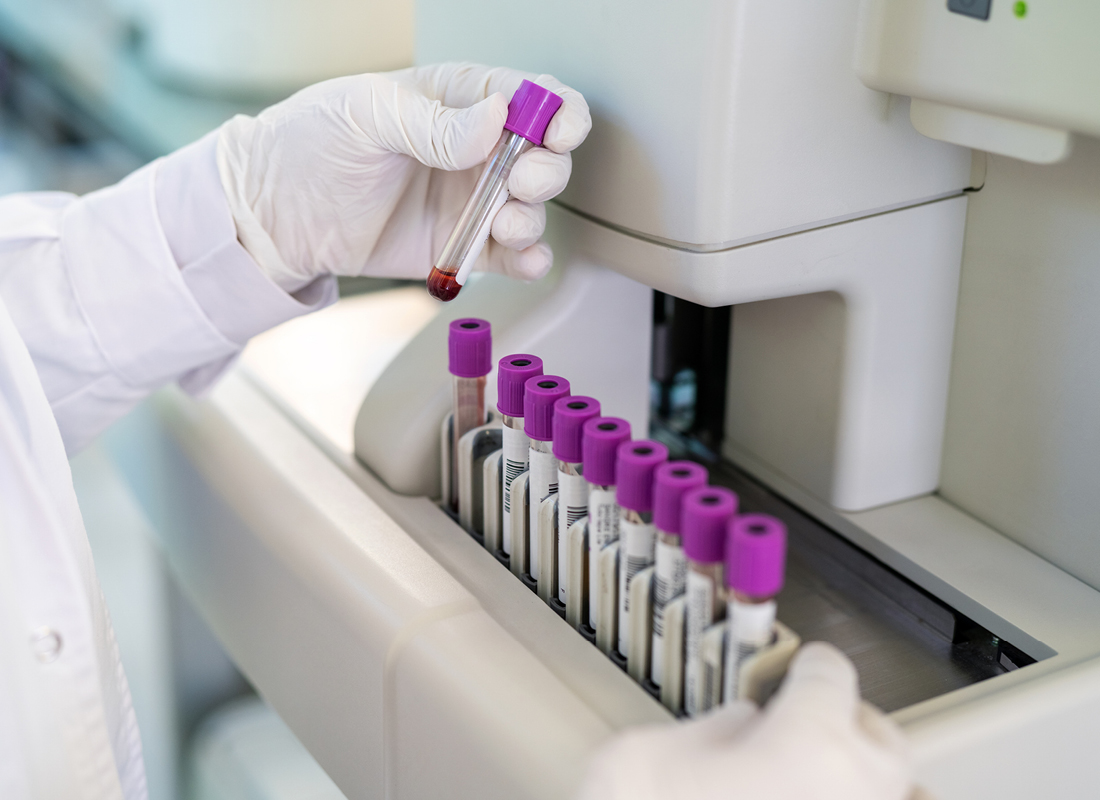Using the IQCP Process to Improve CLIA Compliance and Lab Testing System Quality
Individualized quality control plans offer flexibility and the capacity to seamlessly adopt new nonwaived tests, practices, and technologies.

The Clinical Laboratory Improvement Amendments of 1988 (CLIA) requires labs that perform nonwaived testing to develop and implement quality control (QC) procedures to monitor their accuracy and precision. The CLIA regulations (42 CFR §493.1256[d]) outline the activities and elements that a QC procedure must provide.1 However, labs—apart from pathology labs—don’t have to implement cookie-cutter QC; instead, they can implement individualized quality control plans (IQCPs) tailored to their unique testing environments and systems.2 In addition to supporting compliance with CLIA QC standards, the IQCP offers flexibility and the capacity to seamlessly adopt new nonwaived tests, practices, and technologies.
The Three Phases of IQCP Implementation
The nice thing about the IQCP option is that it incorporates processes labs are already doing—or should be doing—to meet CLIA requirements. IQCP adoption consists of three processes:2
1. Risk Assessment (RA) to identify potential sources of errors in your testing process. This step includes evaluation of what could go wrong regarding (at a minimum):
-
- specimens
-
- test systems
-
- reagents
-
- testing environment
- testing personnel
2. Quality Control Plan (QCP), a document that describes the practices and procedures you use to reduce the likelihood of failures or errors in your testing processes. Among other things, it may include:
-
- electronic controls
-
- internal controls
-
- proficiency testing (PT)
-
- calibration of instruments
-
- maintenance
- assessment of testing staff training and competency
3. Quality Assessment (QA), or ongoing monitoring of QCP effectiveness, which may include:
-
- QC reviews
-
- PT performance reviews
-
- chart reviews
-
- review of specimen rejection logs
-
- review of turnaround time reports
- review of complaint reports
IQCP Eligibility Rules
Implementing an IQCP is voluntary. It’s the lab director’s responsibility to decide whether a lab will use the IQCP option and, if so, whether it will apply for some or all tests the lab performs. The lab director must also ensure that the QCP meets CLIA requirements. How can the lab director tell whether the lab is allowed to adopt an IQCP under CLIA? Consider these two basic rules:3
-
- The IQCP may apply only to nonwaived lab tests.
- The IQCP must be at least as stringent as the QC requirements set out in the CLIA regulation.
Accordingly, before implementing an IQCP, you must first determine—and document—that your current control procedures are at least equivalent to CLIA QC regulations. If you can verify CLIA compliance, your IQCP should be good to go.
Before the IQCP rules took effect in January 2016, some labs relied on manufacturers’ instructions for QC to maintain testing quality. Even then, CMS guidelines warned that “manufacturers’ instructions for QC may not address all the risks, potential errors, and variables” specific to a lab’s situation. Accordingly, CMS advised labs looking into IQCPs to start the decision-making process by considering the QC instructions provided in package inserts and operators’ manuals. The guidelines lay out three scenarios:4
Scenario 1. Manufacturer’s Instructions Meet or Exceed CLIA QC Requirements
Situation: The manufacturer’s instructions state that testing should follow the CLIA QC requirement for two levels of external QC on each day of patient testing.
Conclusion: Because the manufacturer’s instructions meet the minimum CLIA standard, the lab wouldn’t need an IQCP for CLIA purposes. However, the lab would have the option of using an IQCP to complement its current QC program as long as it continued to follow the manufacturer’s instructions (and those instructions remained compliant with CLIA QC requirements).
Scenario 2. Manufacturer’s Instructions Fall Below CLIA QC Requirements
Situation: The manufacturer’s instructions call for QC less frequently than the CLIA requirement of two levels of external QC on each day of patient testing.
Conclusion: Because a lab’s QC procedures must provide equivalent quality testing and meet or exceed the manufacturer’s requirements, the lab in this scenario would have a choice:
-
- Perform QC procedures using the CLIA quality control requirements, including daily testing of two levels of external quality control materials, while also following all CLIA requirements for applicable nonwaived tests.
- Implement an IQCP.
Scenario 3. Manufacturer’s Instructions Don’t Address QC
Situation: The manufacturer’s instructions don’t mention QC or include QC procedures.
Conclusion: According to CMS, the lab in this situation would have the same choice as the lab in Scenario 2. CMS notes that this scenario would also cover IQCP for textbook procedures, laboratory-developed tests (LDTs), and other protocols without manufacturers’ instructions.
Takeaway
For labs that perform nonwaived testing, the IQCP may offer distinct advantages over the standard QC required by CLIA regulations. Carrying out the RA, QCP, and QA elements of the IQCP process allows you to take a deep dive into the potential sources of error embedded in your pre-analytic, analytic, and post-analytic testing phases and uncover problems a standard process might not detect. As well as keeping you compliant with CLIA, IQCP phases and findings may serve as a basis for developing more effective quality controls suited to your lab’s unique environment. Completing the IQCP process may even reveal that your current QC processes are CLIA-compliant—or can be with some minor tweaking. All of these are positive outcomes that give every lab a good reason to consider IQCP.
Resources:
References:
Subscribe to view Essential
Start a Free Trial for immediate access to this article